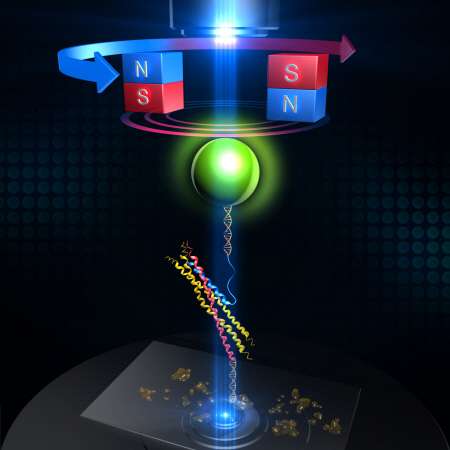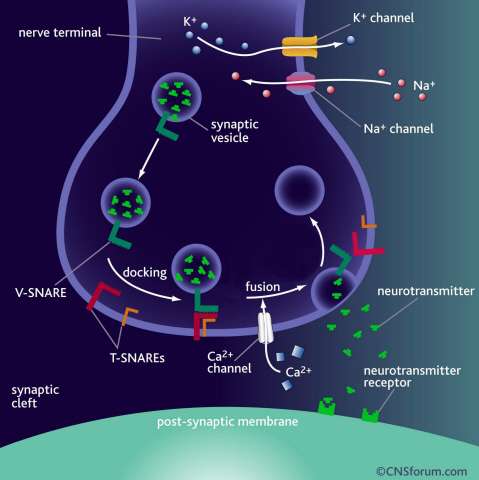Neurotransmitter protein structure and operation principle identified

KAIST Physics Department's Professor Tae-Young Yoon has successfully identified the hidden structure and operation mechanism of the SNARE protein, which has a central role in transporting neurotransmitters between neurons, using magnetic nanotweezers. SNARE protein's cell membrane fusion function is closely related to degenerative brain diseases or neurological disorders such as Alzheimer's. Hence, this research may provide a clue to the disease's prevention and treatment.
Neurotransmission occurs when vesicles containing neurotransmitters fuse with cell membranes in neuron synapses. The SNARE protein is a cell-membrane fusion protein with a core role of releasing neurotransmitters. The academia speculated the SNARE protein would regulate the exchange of neurotransmitters, but its precise function and structure has been unknown. Professor Yoon's research team developed an experimental technique using nanotweezers to measure physical changes to nanometer level by pulling and releasing each protein with force of 1 pN (piconewton). The research identified the existence of hidden SNARE protein's intermediate structure. The process of withstanding and maintaining repulsive forces between bio-membranes in the hidden intermediate structure of SNARE to regulate the exchange of neurotransmitters has also been identified.
Professor Yoon's research team developed an experimental technique using magnetic nanotweezers to measure physical changes of proteins to nanometer level by pulling and releasing each protein with force of 1 pN. The research identified the existence of hidden SNARE protein's intermediate structure and its formation. The process of withstanding and maintaining repulsive forces between bio-membranes in the hidden intermediate structure of SNARE to regulate the exchange of neurotransmitters has also been discovered.

Professor Yoon said, "Ground breaking research results have been produced. A simple experimental technique of applying the smallest possible forces to proteins (with tweezers) to see their hidden structure and formation process can produce the same result as real observation has been developed." He continued, "This technique will be very important in researching biological xobject with physical experimental technique. It will be a vital foundation to consilient research of different academia in the future."
This research was a joint project of Physics Department's Professor Tae-Young Yoon, KAIST, and Biomedical Engineering Institute's Professor Yeon-Kyun Shin at KIST. KAIST Physics Department's Professor Yong-Hoon Cho, Ph.D. candidate Do-Yong Lee and KIAS Computational Sciences Department's Professor Chang-Bong Hyun participated. The research was published on Nature Communications on April 16th.
Journal information: Nature Communications



















